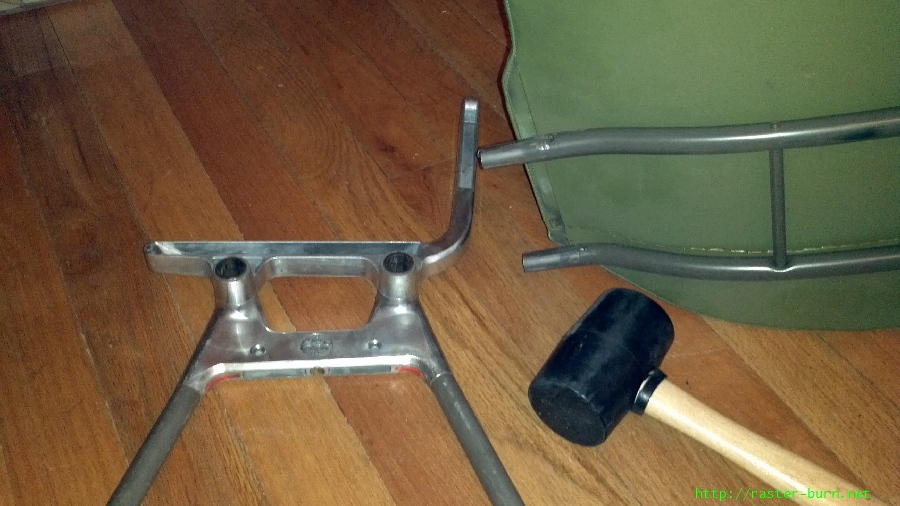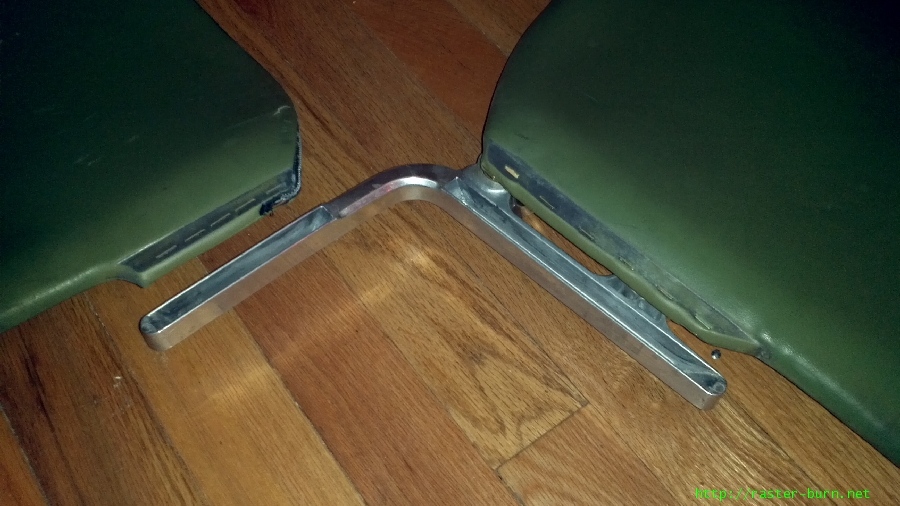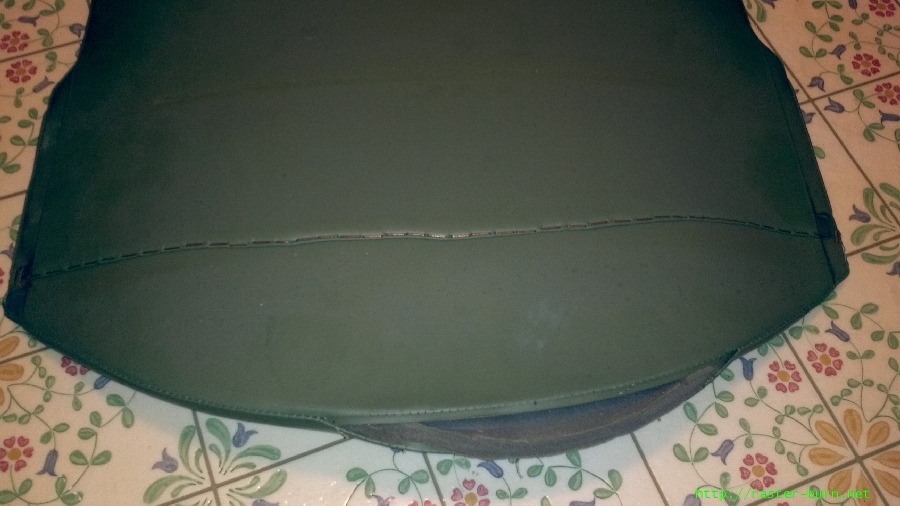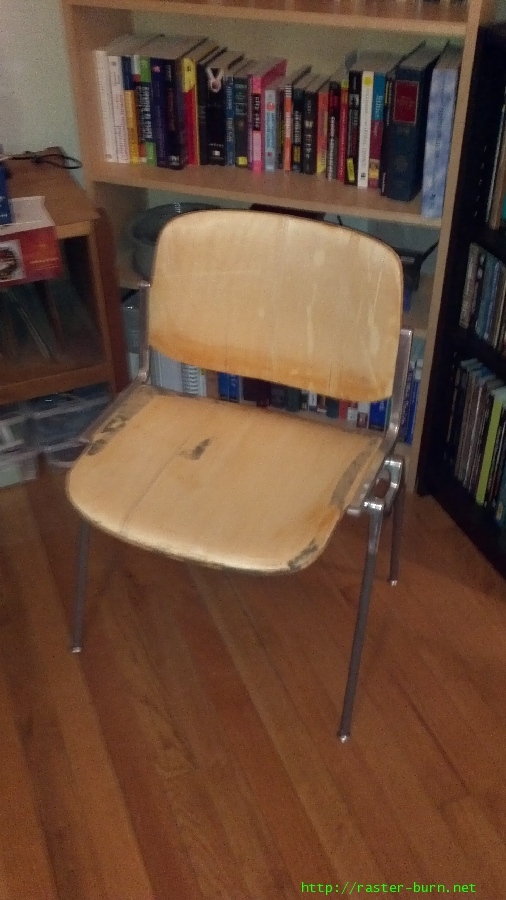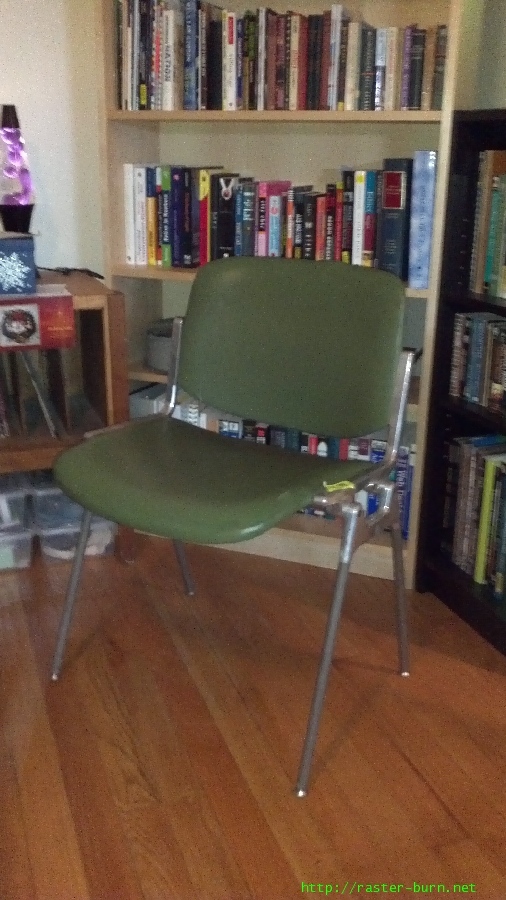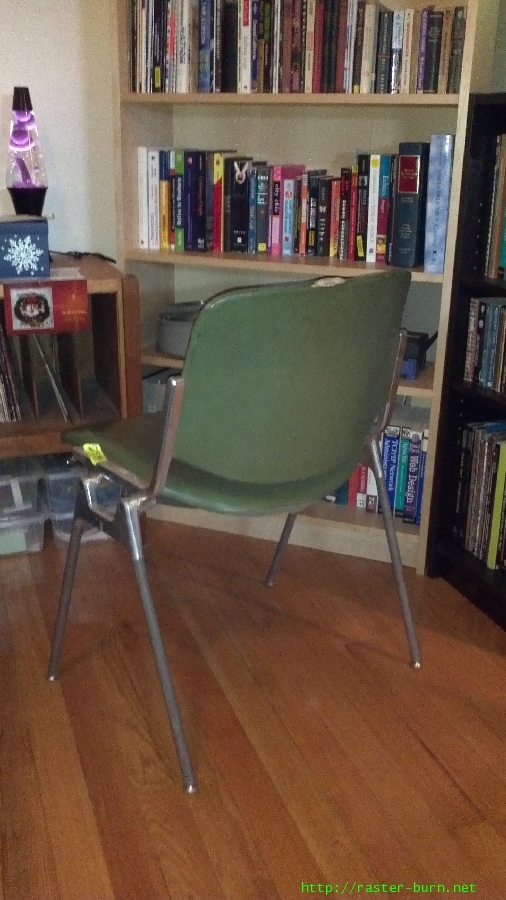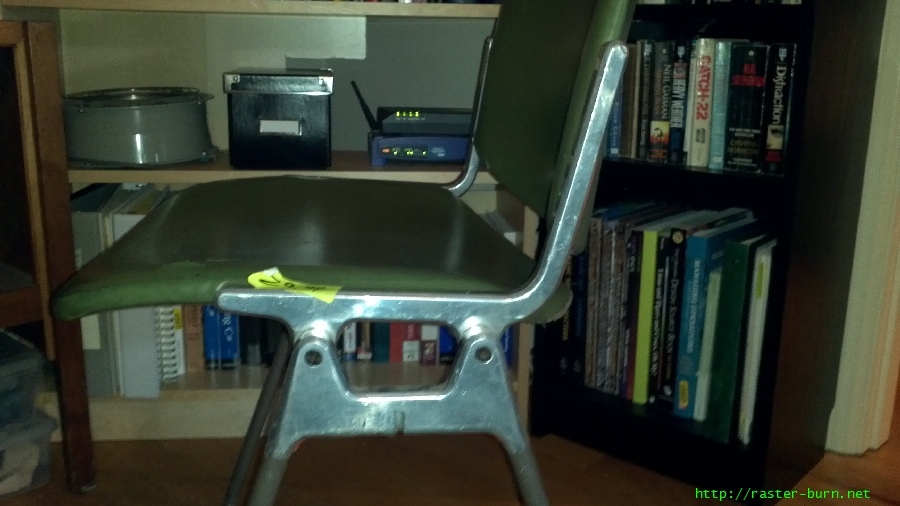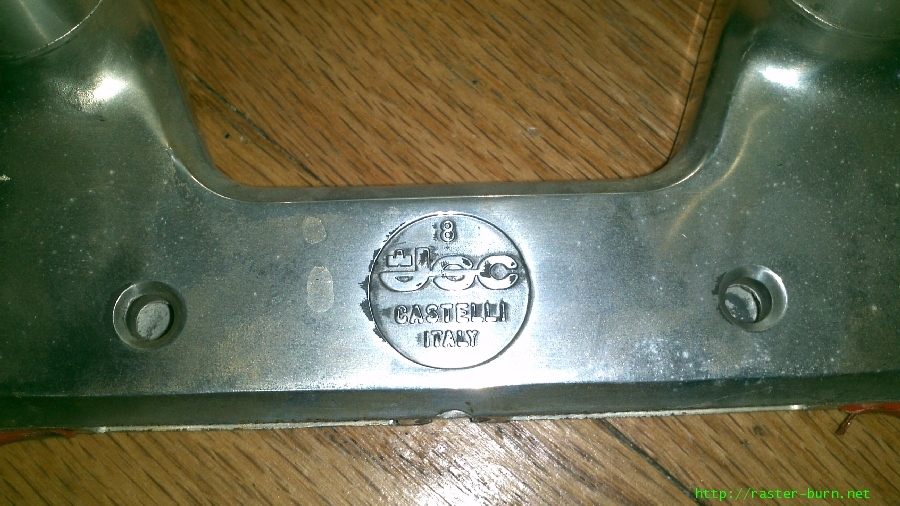Curious how it turned out? Click here for the followup to this post!
The upholstery on the Castelli DSC 106 I bought was torn, and rather discolored from damp storage, not worth trying to salvage. I decided to pull it all off and see what the plywood underneath looked like.
First step was to take out the screws, and knock the frame apart. Surprisingly easy, only took a couple whacks with a rubber mallet and it came right apart.
The seat and back fit into notches in the cast frame pieces.
The vinyl covering was stapled into place with what look to be brass plated steel staples.
The back cover is odd. It has a zipper for one of the seams.
The wood underneath was not perfect, but it’s not bad for plywood. The back has a few cracks in the top layer of plywood, and marring from the production process. I’m going to sand things a bit, mostly to get rid of splinters on the edges, and varnish it. Should look pretty decent at the end, if a little bit richer in character than the ones originally produced with a wood finish.
The rest of the pictures I took of the tear down process are in the gallery below. Lots of detail shots of the upholstery seams and fasteners, so I can get as close to original as possible if I decide I want to put a new cover on in the future.
Curious how it turned out? Click here for the followup to this post!

